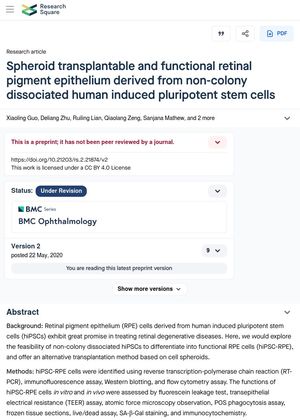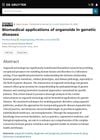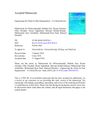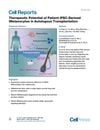Spheroid Transplantable and Functional Retinal Pigment Epithelium Derived from Non-Colony Dissociated Human Induced Pluripotent Stem Cells
May 2020
in “
Research Square (Research Square)
”

TLDR Human stem cells can turn into functional eye cells that might help treat retinal diseases.
The study from May 2020 explored the potential of non-colony dissociated human induced pluripotent stem cells (hiPSCs) to differentiate into functional retinal pigment epithelium (RPE) cells. The hiPSC-RPE cells were identified using various assays and were found to express biomarkers of RPE cells but not iPSCs. These cells displayed RPE-like characteristics including barrier function, phagocytic activity, and polarized membrane. The study also found that hiPSC-RPE cell spheroids could form a monolayer on decellularized corneal matrixes and maintain segmental sheet growth in the subretinal of RPE degenerate chinchilla rabbits in vivo. This suggests that non-colony dissociated hiPSCs can effectively differentiate into functional RPE cells, and that cell spheroid transplantation could be a potential alternative method for RPE degenerative disease therapy in the future.



